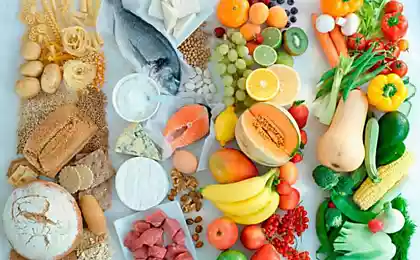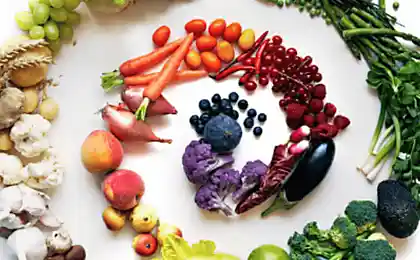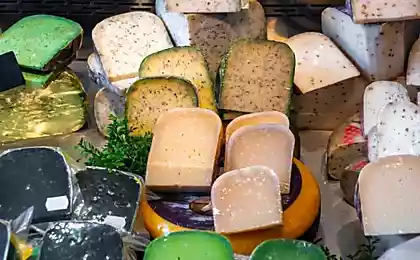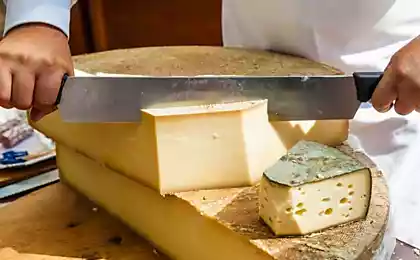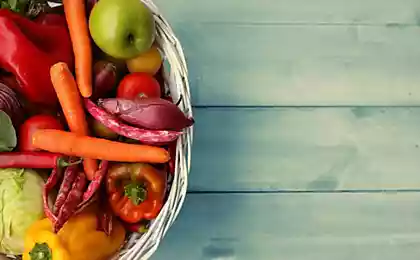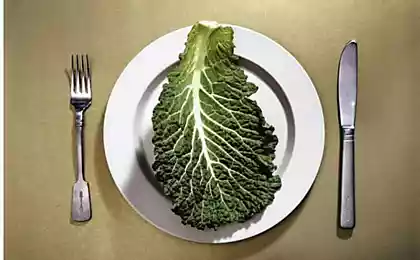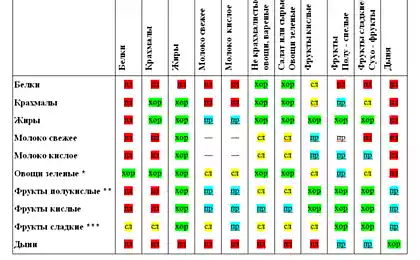172
How to choose a solid cheese
Cheese is well-deservedly considered a tasty and healthy product, although nowadays its reputation is tarnished. This is because unscrupulous manufacturers have filled the market with low-quality cheese products and it becomes difficult to buy quality hard cheese.
Cheese fakes are stuffed with cheap palm oil with a shock dose of vegetable fats. The use of such food clogs the vessels, harms the liver, disrupts the pancreas. So today we're going to tell you How to choose cheese Good quality, which will be both pleasant and useful to eat.

Solid cheese from milk is obtained by pressing. It is stored longer than other types of cheeses (soft, brine, mold or semi-hard). And the longer the hard cheese to withstand, the more bright and rich taste it will have.
Often the information that in front of you on the counter is a cheese product, listed directly on the packaging. This means that the “cheese” manufacturers stuffed with vegetable fats, dyes and thickeners. This product should be avoided, because it will not bring any benefit.

As for other data on the package, you should pay attention to the manufacturer, the variety of product, the date of production, as well as the composition. The ideal hard cheese should have only 3 ingredients: milk, salt and sourdough. The more different supplements and substitutes, the worse.
There is a lot to be said about the cheese itself. Any hard cheese on top is covered with either a hard or natural crust. If the crust is swollen in places, this is most likely indicative of cheese spoilage.

A crust of half a centimeter or more indicates that cheese has been stored for a long time. Fresh and quality cheese usually has a smooth, smooth and uniform crust about 2 mm thick. There should also be no raid on it.
You should also look at the color of the cheese. If the product has an uneven color and is covered with spots, it still needs to ripen. If the product is bright yellow, then probably the manufacturer experimented with the dye.
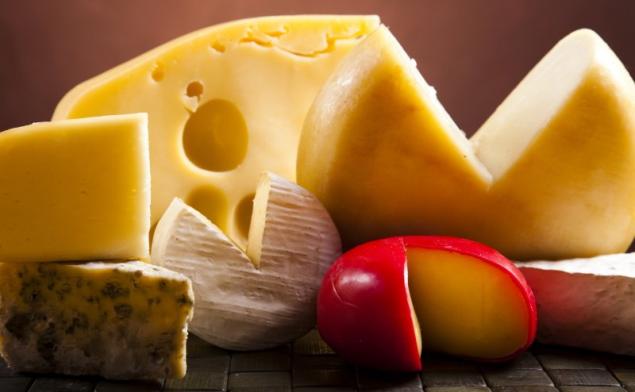
Natural cheese has a milky color with a slight yellowish tint. Also, slices of cheese should be dry, and even small drops of moisture indicate a violation of the technology of preparing the product, or of third-party additives.
The taste of cheese can also be eloquent. If a slice of the product creaks on the teeth, it probably contains starch. Natural cheese is moderately salty and at the same time has a pleasant creamy taste.

Also. cheese Exudes a pronounced, but not too intrusive milky aroma. If the smell is sharp, this indicates that the cheese has become unusable.
Remember that quality and fresh hard cheese is very flexible and plastic. And if a slice of cheese half a centimeter thick bent carefully at right angles, it will not break. If the slice is torn in the place of the fold, the problem is either staleness or poor quality of the product.
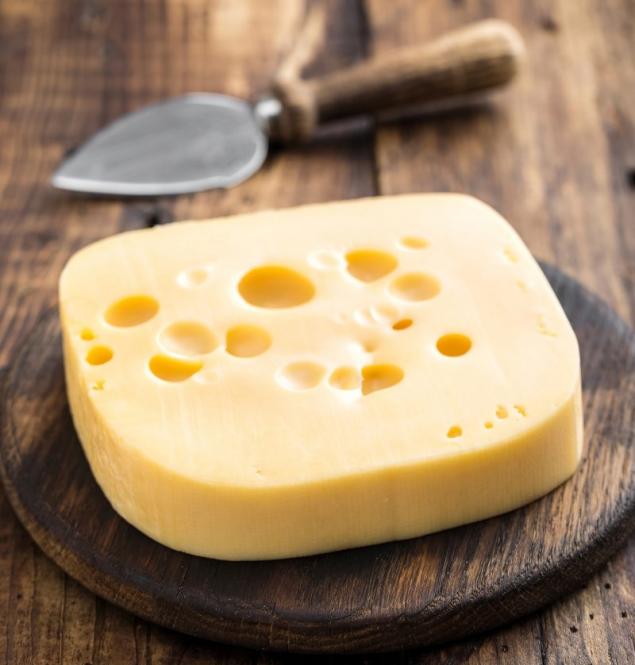
However, do not try to find quality hard cheese at a low price - you will only waste your time. The production of 1 kg of cheese has to spend about 11 liters of milk, so the manufacturer will not be able to put on the market a natural product at a low price. So be prepared to pay more so that your households eat quality food without cheap additives.
Cheese fakes are stuffed with cheap palm oil with a shock dose of vegetable fats. The use of such food clogs the vessels, harms the liver, disrupts the pancreas. So today we're going to tell you How to choose cheese Good quality, which will be both pleasant and useful to eat.

Solid cheese from milk is obtained by pressing. It is stored longer than other types of cheeses (soft, brine, mold or semi-hard). And the longer the hard cheese to withstand, the more bright and rich taste it will have.
Often the information that in front of you on the counter is a cheese product, listed directly on the packaging. This means that the “cheese” manufacturers stuffed with vegetable fats, dyes and thickeners. This product should be avoided, because it will not bring any benefit.

As for other data on the package, you should pay attention to the manufacturer, the variety of product, the date of production, as well as the composition. The ideal hard cheese should have only 3 ingredients: milk, salt and sourdough. The more different supplements and substitutes, the worse.
There is a lot to be said about the cheese itself. Any hard cheese on top is covered with either a hard or natural crust. If the crust is swollen in places, this is most likely indicative of cheese spoilage.

A crust of half a centimeter or more indicates that cheese has been stored for a long time. Fresh and quality cheese usually has a smooth, smooth and uniform crust about 2 mm thick. There should also be no raid on it.
You should also look at the color of the cheese. If the product has an uneven color and is covered with spots, it still needs to ripen. If the product is bright yellow, then probably the manufacturer experimented with the dye.

Natural cheese has a milky color with a slight yellowish tint. Also, slices of cheese should be dry, and even small drops of moisture indicate a violation of the technology of preparing the product, or of third-party additives.
The taste of cheese can also be eloquent. If a slice of the product creaks on the teeth, it probably contains starch. Natural cheese is moderately salty and at the same time has a pleasant creamy taste.

Also. cheese Exudes a pronounced, but not too intrusive milky aroma. If the smell is sharp, this indicates that the cheese has become unusable.
Remember that quality and fresh hard cheese is very flexible and plastic. And if a slice of cheese half a centimeter thick bent carefully at right angles, it will not break. If the slice is torn in the place of the fold, the problem is either staleness or poor quality of the product.

However, do not try to find quality hard cheese at a low price - you will only waste your time. The production of 1 kg of cheese has to spend about 11 liters of milk, so the manufacturer will not be able to put on the market a natural product at a low price. So be prepared to pay more so that your households eat quality food without cheap additives.
Instructions for the preparation of cottage cheese envelopes with apples
Selection of ideas for decorating housing with plants





